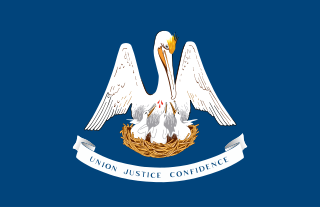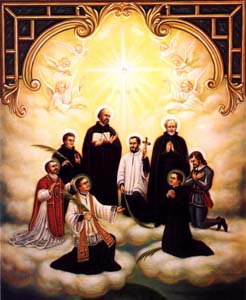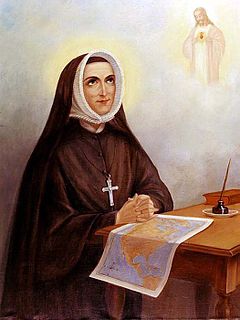
Louisiana is a state in the Deep South region of the South Central United States. It is the 19th-smallest by area and the 25th most populous of the 50 U.S. states. Louisiana is bordered by the state of Texas to the west, Arkansas to the north, Mississippi to the east, and the Gulf of Mexico to the south. A large part of its eastern boundary is demarcated by the Mississippi River. Louisiana is the only U.S. state with political subdivisions termed parishes, which are equivalent to counties. The state's capital is Baton Rouge, and its largest city is New Orleans.

The Mississippi River is the second-longest river and chief river of the second-largest drainage system on the North American continent, second only to the Hudson Bay drainage system. From its traditional source of Lake Itasca in northern Minnesota, it flows generally south for 2,320 miles (3,730 km) to the Mississippi River Delta in the Gulf of Mexico. With its many tributaries, the Mississippi's watershed drains all or parts of 32 U.S. states and two Canadian provinces between the Rocky and Appalachian mountains. The main stem is entirely within the United States; the total drainage basin is 1,151,000 sq mi (2,980,000 km2), of which only about one percent is in Canada. The Mississippi ranks as the fourth-longest river and fifteenth-largest river by discharge in the world. The river either borders or passes through the states of Minnesota, Wisconsin, Iowa, Illinois, Missouri, Kentucky, Tennessee, Arkansas, Mississippi, and Louisiana.
Saint Charles may refer to:

Kaskaskia is a village in Randolph County, Illinois. Having been inhabited by indigenous peoples, it was settled by France as part of the Illinois Country. Its population peaked at about 7,000 in the 18th century, when it was a regional center. During the American Revolutionary War, the town, which by then had become an administrative center for the British Province of Quebec, was taken by the Virginia militia during the Illinois campaign. It was designated as the county seat of Illinois County, Virginia, after which it became part of the Northwest Territory in 1787. Kaskaskia was later named as the capital of the United States' Illinois Territory, created on February 3, 1809. In 1818, when Illinois became the 21st U.S. state, the town briefly served as the state's first capital until 1819, when the capital was moved to more centrally located Vandalia.

Ste. Genevieve is a city in Ste. Genevieve Township and is the county seat of Ste. Genevieve County, Missouri, United States. The population was 4,410 at the 2010 census. Founded in 1735 by French Canadian colonists and settlers from east of the river, it was the first organized European settlement west of the Mississippi River in present-day Missouri.

Louis Jolliet was a French-Canadian explorer known for his discoveries in North America. Jolliet and Jesuit Father Jacques Marquette, a Catholic priest and missionary, were the first non-Natives to explore and map the Mississippi River in 1673.

The Canadian Martyrs, also known as the North American Martyrs, were eight Jesuit missionaries from Sainte-Marie among the Hurons. They were ritually tortured and killed on various dates in the mid-17th century in Canada, in what is now southern Ontario, and in upstate New York, during the warfare between the Iroquois and the Huron. They have subsequently been canonized and venerated as martyrs by the Catholic Church.

Jacques Marquette S.J., sometimes known as Père Marquette or James Marquette, was a French-American Jesuit missionary who founded Michigan's first European settlement, Sault Ste. Marie, and later founded St. Ignace, Michigan. In 1673, Marquette, with Louis Jolliet, an explorer born near Quebec City, was the first European to explore and map the northern portion of the Mississippi River Valley.

The District of Louisiana, or Louisiana District, was an official, temporary, United States government designation for the portion of the Louisiana Purchase that had not been organized into the Orleans Territory. It officially existed from March 10, 1804, until July 4, 1805, when it was incorporated as the Louisiana Territory.

The Illinois Country — sometimes referred to as Upper Louisiana — was a vast region of New France claimed in the 1600s in what is now the Midwestern United States. While these names generally referred to the entire Upper Mississippi River watershed, French colonial settlement was concentrated along the Mississippi and Illinois Rivers in what is now the U.S. states of Illinois and Missouri, with outposts in Indiana. Explored in 1673 from Green Bay to the Arkansas River by the Canadien expedition of Louis Jolliet and Jacques Marquette, the area was claimed by France. It was settled primarily from the Pays d'en Haut in the context of the fur trade. Over time, the fur trade took some French to the far reaches of the Rocky Mountains, especially along the branches of the broad Missouri River valley. The French name, Pays des Illinois, means "Land of the Illinois [plural]" and is a reference to the Illinois Confederation, a group of related Algonquian native peoples.

John Dawson Gilmary Shea was a writer, editor, and historian of American history in general and American Roman Catholic history specifically. He was also a leading authority on aboriginal native Americans in the United States. He is regarded as the “Father of American Catholic History”.

Louisiana or French Louisiana was an administrative district of New France. Under French control 1682 to 1762 and 1801 (nominally) to 1803, the area was named in honor of King Louis XIV, by French explorer René-Robert Cavelier, Sieur de la Salle. It originally covered an expansive territory that included most of the drainage basin of the Mississippi River and stretched from the Great Lakes to the Gulf of Mexico and from the Appalachian Mountains to the Rocky Mountains.
The history of the area that is now the US state of Louisiana began roughly 10,000 years ago. The first traces of permanent settlement, ushering in the Archaic period, appear about 5,500 years ago.

Spanish Louisiana was a governorate and administrative district of the Viceroyalty of New Spain from 1762 to 1801 that consisted of a vast territory in the center of North America encompassing the western basin of the Mississippi River plus New Orleans. The area had originally been claimed and controlled by France, which had named it La Louisiane in honor of King Louis XIV in 1682. Spain secretly acquired the territory from France near the end of the Seven Years' War by the terms of the Treaty of Fontainebleau (1762). The actual transfer of authority was a slow process, and after Spain finally attempted to fully replace French authorities in New Orleans in 1767, French residents staged an uprising which the new Spanish colonial governor did not suppress until 1769. Spain also took possession of the trading post of St. Louis and all of Upper Louisiana in the late 1760s, though there was little Spanish presence in the wide expanses of the "Illinois Country".

Jesuit missions in North America began early in the 17th century, faltered at the beginning of the 18th, disappeared during the suppression of the Society of Jesus around 1763, and returned around 1830 after the restoration of the Society. The missions were established as part of the colonial drive of France and Spain during the period, the "saving of souls" being an accompaniment of the constitution of Nouvelle-France and early New Spain. The efforts of the Jesuits in North America were paralleled by their China missions on the other side of the world, and in South America. They left written documentation of their efforts, in the form of The Jesuit Relations.

The Pays d'en Haut was a territory of New France covering the regions of North America located west of Montreal. The vast territory included most of the Great Lakes region, expanding west and south over time into the North American continent as the French had explored. The Pays d'en Haut was established in 1610 and dependent upon the colony of Canada until 1763, when the Treaty of Paris ended New France, and both were ceded to the British as the Province of Quebec.

Rose Philippine Duchesne, was a French religious sister and educator who was declared a saint of the Catholic Church. Along with the foundress, Madeleine-Sophie Barat, she was a prominent early member of the Religious Sisters of the Sacred Heart of Jesus, and founded the congregation's first communities in the United States. She spent the last half of her life teaching and serving the people of the Midwestern United States, then the western frontier of the nation.
The history of St. Louis, Missouri from prehistory to 1762 was marked by the presence of the Moundbuilder indigenous culture, the explorations of Europeans, and the establishment of French trading posts along the Mississippi River.

The Colonial history of Missouri covers the French and Spanish exploration and colonization: 1673–1803, and ends with the American takeover through the Louisiana Purchase

The Society of Jesus is a religious order of the Catholic Church whose members are known as Jesuits and that was founded by Ignatius of Loyola in 1540 in Spain. In the United States, the order is best known for its missions to the Native Americans in the early 17th century, its network of colleges and universities, and its politically conservative role in the Catholic Counter Reformation.















